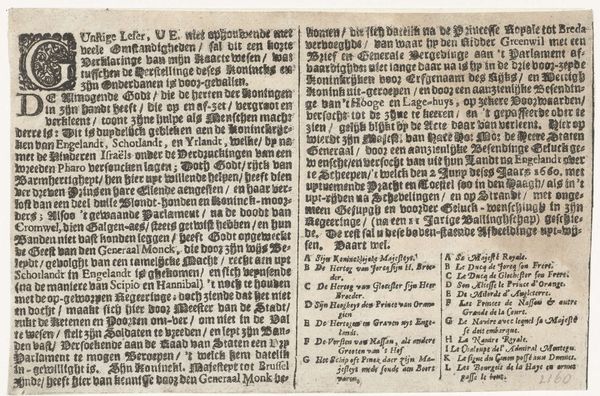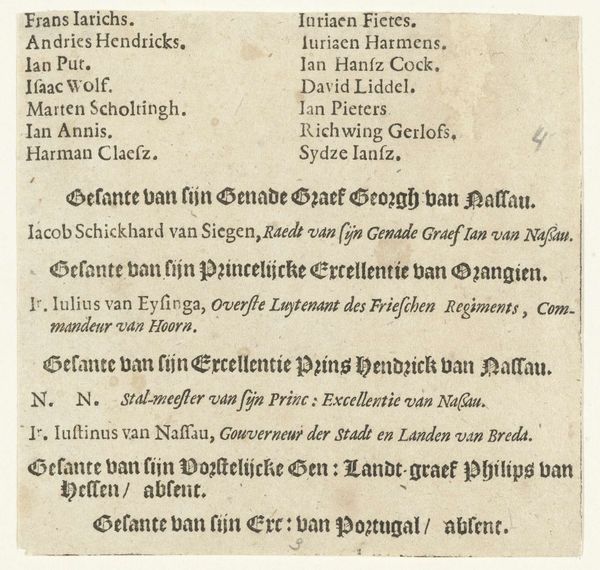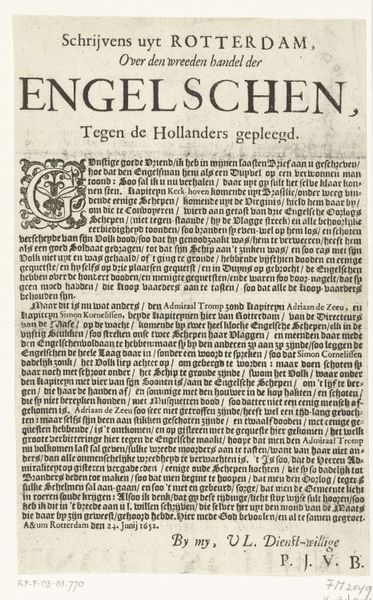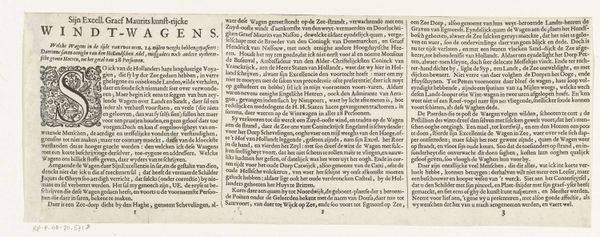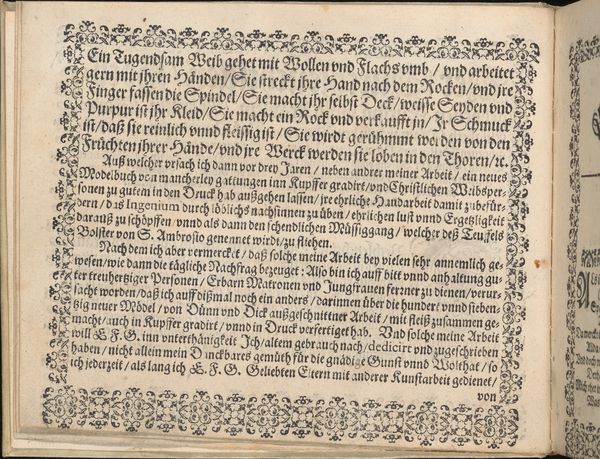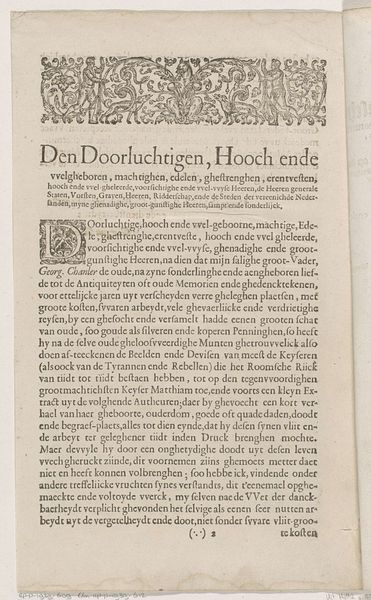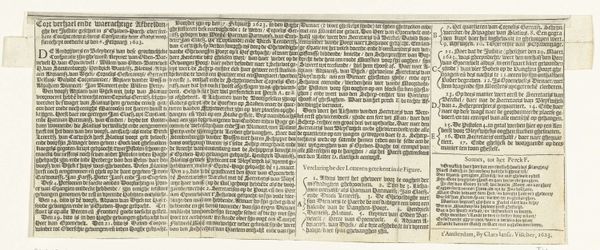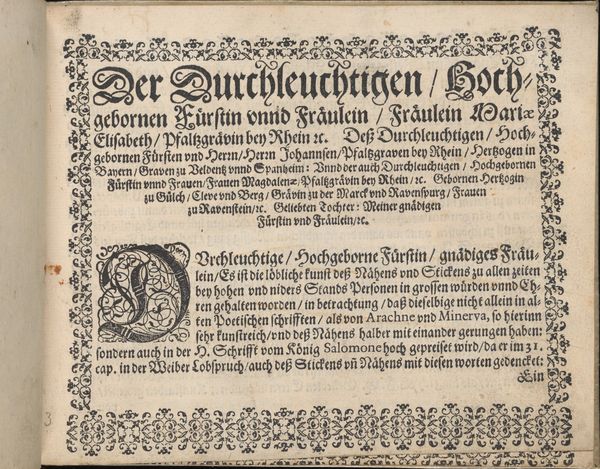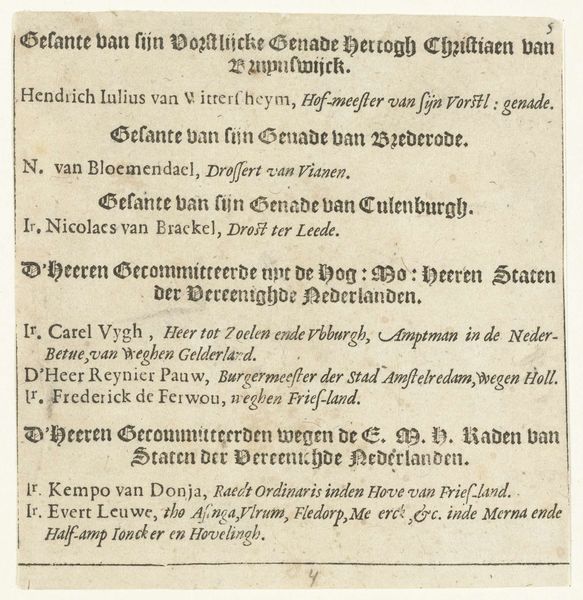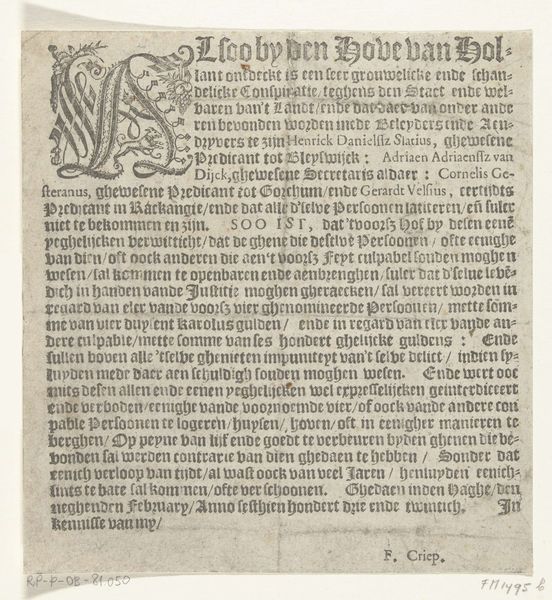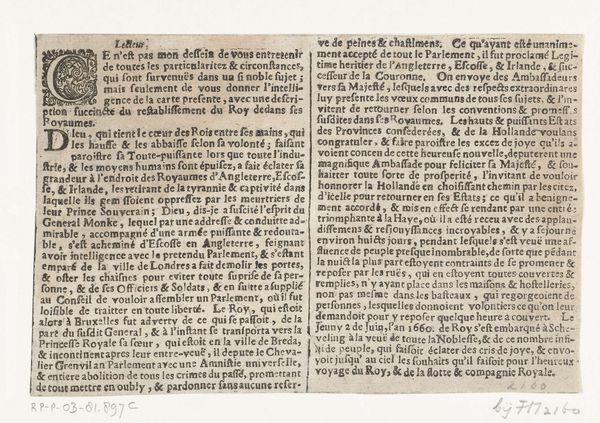
Tekstblad bij de begrafenis van Willem Lodewijk, graaf van Nassau, in de Grote Kerk te Leeuwarden, 1620 1620
0:00
0:00
claesjanszvisscher
Rijksmuseum
graphic-art, print, typography, engraving
#
graphic-art
#
dutch-golden-age
# print
#
typography
#
engraving
Dimensions: height 126 mm, width 123 mm
Copyright: Rijks Museum: Open Domain
Curator: Here we have "Tekstblad bij de begrafenis van Willem Lodewijk, graaf van Nassau, in de Grote Kerk te Leeuwarden, 1620", created by Claes Jansz. Visscher. It's an engraving, so a type of print, a medium so common in the Dutch Golden Age. Editor: It’s essentially a broadside announcement for a funeral! The text is so dense. I initially see a document meant for public consumption but there's an odd disconnect with the private mourning. What strikes you? Curator: Absolutely. And that tension between the public and private is precisely what makes these seemingly mundane objects so compelling. Think about the democratization of information at this time, the rise of print culture, of disseminating information to a wider audience. This isn't just a funeral announcement; it's a carefully constructed piece of propaganda. A performance in print, if you will. Look at how the type is arranged, the way certain words are emphasized. Who was Visscher trying to reach, do you think? Editor: I'd say… well, everyone? Those who couldn't attend perhaps. It feels like an attempt to include the masses in a significant event. Also it seems to mention errors. I see a line about errors and corrections made to an initial printing. Curator: Precisely. These notices ensured wider audiences beyond those immediately present at the service understood the appropriate affect, tone, or understood who properly grieved and mourned. The list of names reinforces a social hierarchy. Note also that errors may extend beyond a single impression – who might stand to benefit from the corrected printing, and who might take offense? Editor: So, this isn't just a simple announcement. It's a statement of power and social standing. I see it more clearly now as something complex, a controlled narrative disseminated in print. Curator: Indeed. What was initially a memorial has transformed, for me, into a lens for social control. A tool. What initially read as an aesthetic absence transforms into presence. I am so grateful for this opportunity! Editor: That’s… dark, but so fascinating! It highlights how we engage with and perceive the intention of such historical works through our own unique framework of historical references. Thank you.
Comments
No comments
Be the first to comment and join the conversation on the ultimate creative platform.
